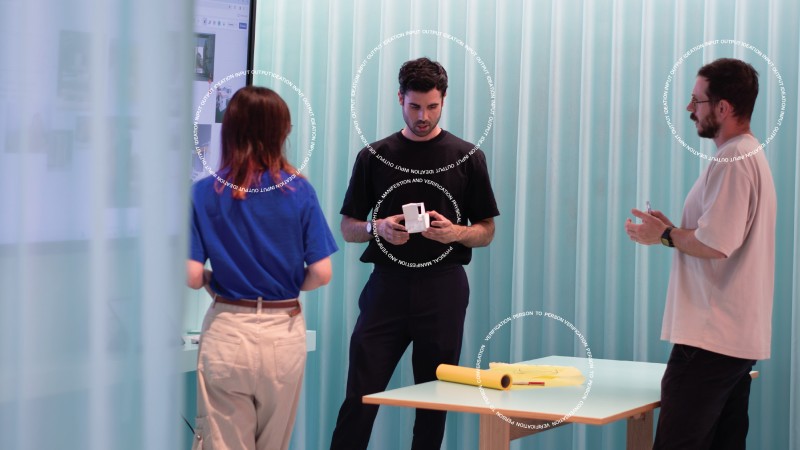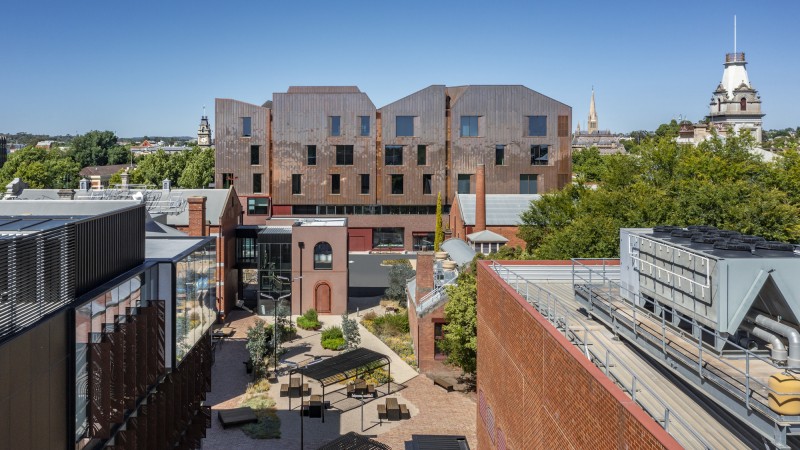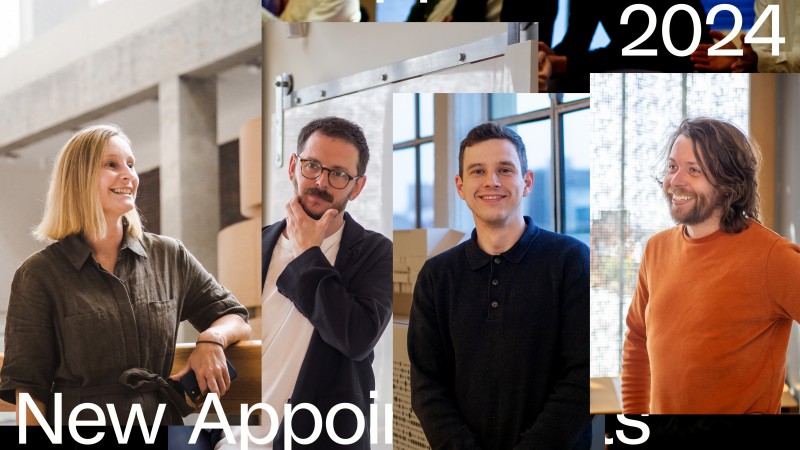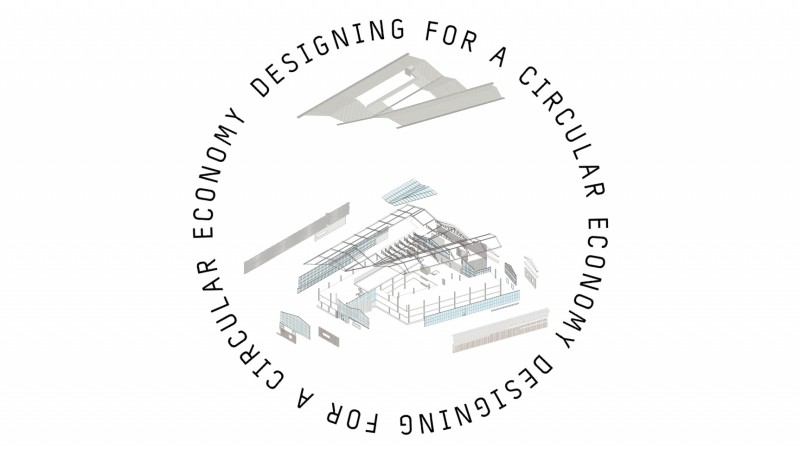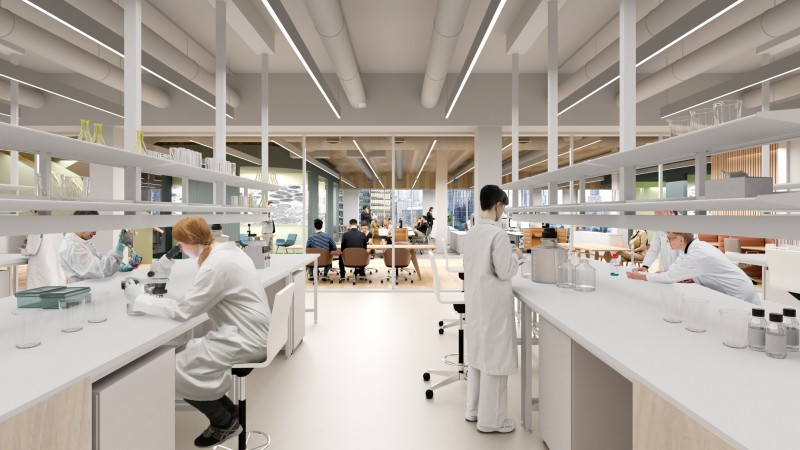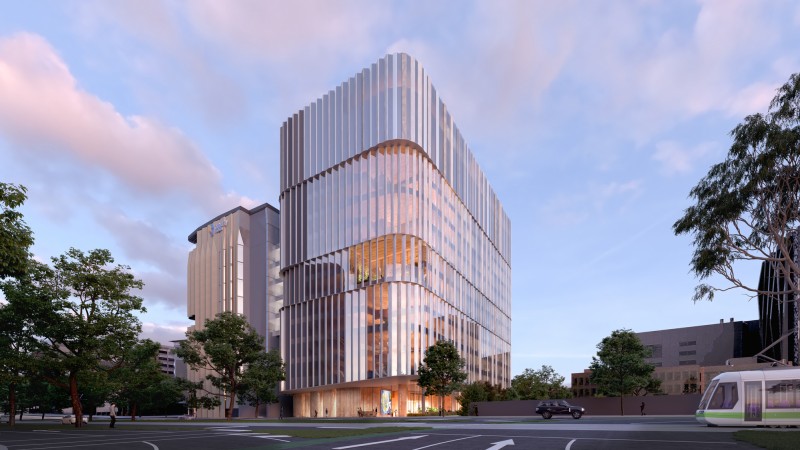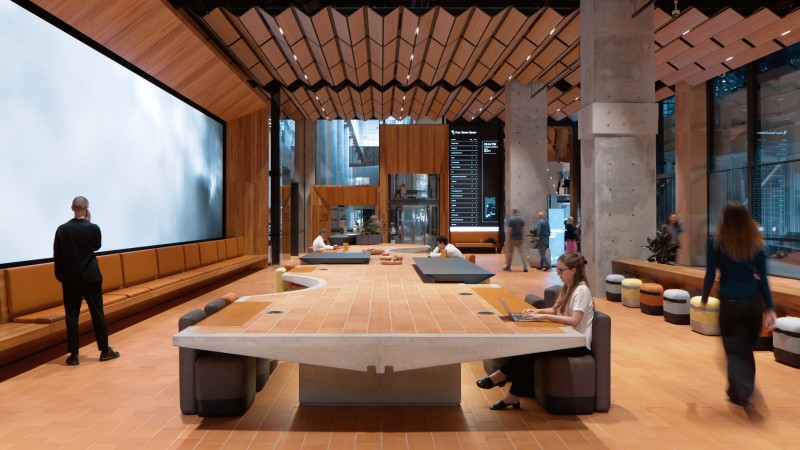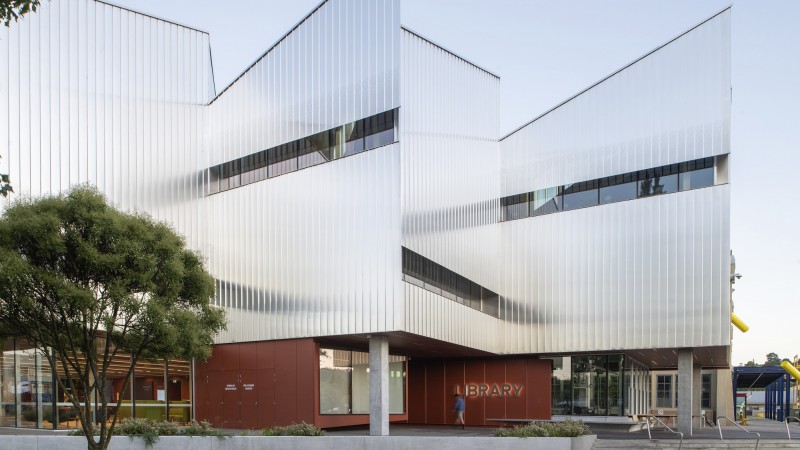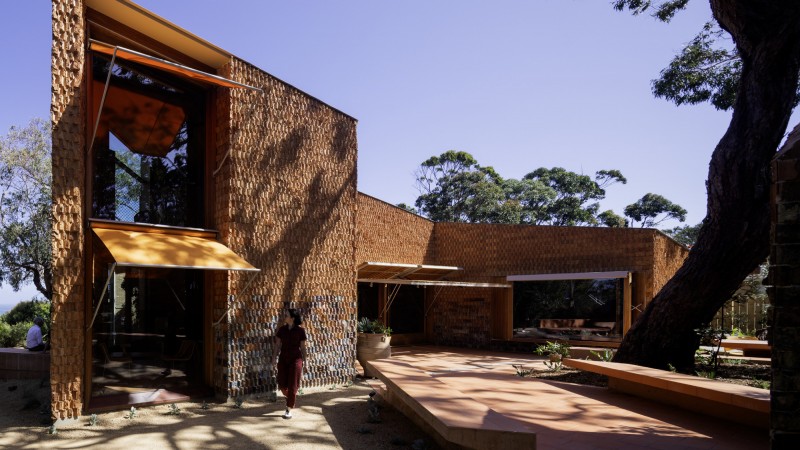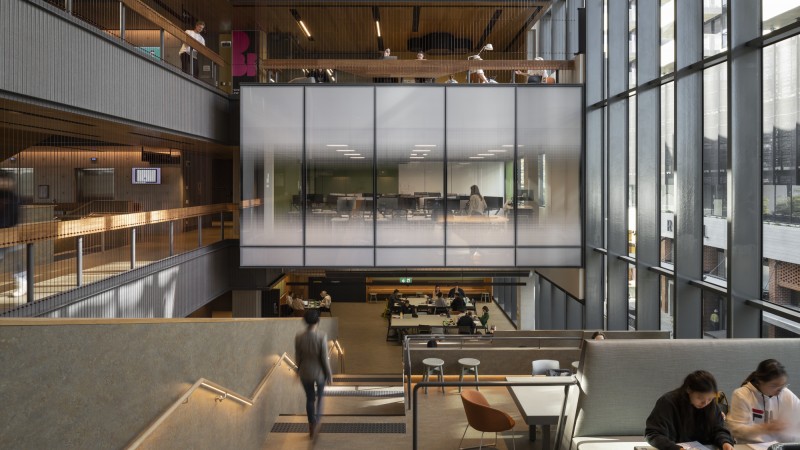The colour and tonality of the cliff edges in Anglesea are expressed in the use of an invented brick. The bricks were developed with brickmaker Klynton Krause, a long-time collaborator. The extensive process involved extrusion and hand tearing the brick surface prior to cutting which exposes a raw, rough-hewn texture.
A series of glazing experiments applied to raw clay before single firing are revealed in different sections of the building. Unglazed bricks blend to green and brown glazed bricks which broadly align with the extensive planting of coastal banksias surrounding the property. A single fall of the roof across the plan ends in a low point where a terracotta clad spout discharges water onto a massive rock.
